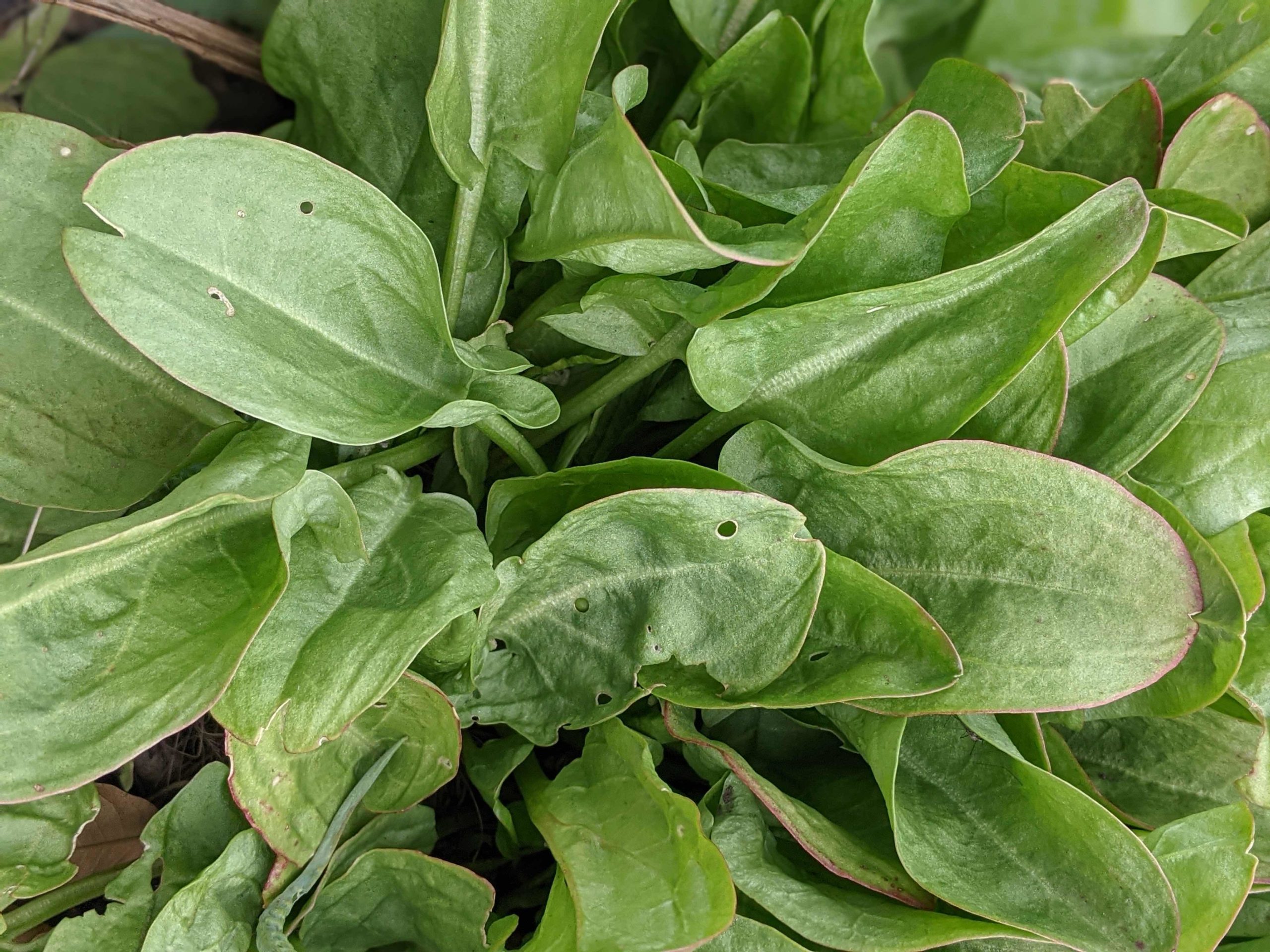It may not seem like much of a plant, but sorrel deserves a chance in any garden. This easy to grow perennial herb requires little maintenance and produces tasty leaves useful in cooking. You may be surprised to learn about the varied uses of this plant and its interesting relatives.
Quick Facts
Sorrel is a member of the Buckwheat (Polygonaceae) family, a relative of rhubarb in the Rumex genus, which consists of the docks and sorrels. You are perhaps familiar with Curly dock (Rumex crispus), a common roadside “weed” deadly to animals but edible by humans, who traditionally ground its seeds into flour, roasted seeds into a coffee-like drink, or used the leaves as a nutrition-packed spring herb much like other sorrels.

Sorrel is easy to grow and propagate; its basal growth form is easily divided at the roots. It has no major insect or disease problems and can even be grown in containers. The leaves produce all season long, though it prefers shade. Cutting back in spring or when the flower stalk emerges stimulates growth, as does clipping the leaves regularly throughout the growing season. Many cultivated varieties are available.
Sorrel has the unusual trait of being dioecious, which means that male and female flowers grow on different plants. This trait is rare in flowering plants, only 10% of which are dioecious. The rest produce male and female flowers on the same plants.
Uses for Sorrel

Sorrel is among the many wild green herbs long harvested for food and medicine throughout history. The sour, lemony-tasting and nutritious leaves are used in cuisine applications spanning Europe and parts of Asia and Africa, often in combination with other greens. The acidic flavor comes from the presence of oxalic acid, which is toxic at high doses. This same high oxalic acid content is what makes rhubarb leaves toxic. Cooking or blanching sorrel leaves reduces the oxalic acid considerably. Mature leaves are best cooked, and young raw leaves are OK (in moderation) in salads or sandwiches.
| Lemon Sorrel Cream Sauce |
| Ingredients: 2 cups chopped sorrel leaves (or spinach, chard, or other greens) 1 cup cream or half & half 1 cup chicken or vegetable stock 2 tbsp butter Juice from 1 lemon Salt and pepper to taste |
| Directions: Simmer cream and stock on low heat until reduced by half. Melt the butter and sauté chopped sorrel until wilted. Puree in food processor with cream-stock mixture. Add lemon juice, salt, and pepper. Add to pasta, rice, mashed potatoes, or other starchy foods. |
Sorrel has many applications: Herbal preparations, dyes, salads, soups (particularly sour soups), sauces, pastries, stuffed grain rolls akin to stuffed grape leaves. The leaves quickly lose freshness and should be used soon after harvesting – yet another reason to grow it in your garden, because you won’t find it at the grocery store. The roots have been used in folk medicine preparations; for example, “Drinking sorrel water flavored with a bit of honey was believed to bring down a fever and help clear sinus infections (Bello et al. 2019)” (Korpelainen & Pietiläinen, 2020, p. 240). Research studies have identified compounds within sorrel and related species with antioxidant and other biologically significant properties.
Sorrel Relatives
Other close relatives of common sorrel are worth mentioning:
Sheep sorrel (Rumex acetosella) usually considered a weed but the small leaves are edible
Red-veined sorrel (Rumex sanguineus) considered more of an ornamental because the leaves are not considered tasty
Spinach dock or patience dock (Rumex patientia) has a good flavor similar to spinach
Spinach rhubarb (Rumex abyssinicus) leaves can substitute for spinach and ribs can be used like rhubarb; native to tropical Africa where it is used for medicines, as a wild potherb, and for dye
French sorrel (Rumex scutatus) used as a spinach substitute and in salads and soups; preferred by some over common sorrel

References
Korpelainen, H., & Pietiläinen, M. (2020). Sorrel (Rumex acetosa L.): Not only a weed but a promising vegetable and medicinal plant. The Botanical Review, 86, 234-246.


